Hoka One One Rincon 2
Test Locations: Gunnison — Crested Butte, Colorado & Logan, Utah
Test Duration: 83 miles
Stated Stack Height: 32 mm (heel) / 27 mm (forefoot)
Stated Heel-to-Toe Drop: 5 mm
Stated Features:
- Engineered sandwich mesh upper offers lightweight breathability
- Slim tongue package reduces weight
- Accentuated heel pull tab for easy entry
- Full-compression EVA midsole provides signature HOKA cushioning
- Revised early-stage Meta-Rocker allows for a quick acceleration
- Full ground contact designed for smooth and stable ride
- Strategic high-abrasion rubber zones to reduce weight
Reviewer: 6’1″, 145 lbs / 185 cm, 66 kg
Size Tested: US Men’s 11.5
Stated Weight per Shoe (US Men’s Size 9): 218 g / 7.7 oz
Blister Measured Weight (US Men’s 11.5):
- Shoes + Laces: 237 g (left) & 243 g (right)
- Insoles: 11 g (left) & 10 g (right)
- Total: 248 g (left) & 253 g (right)
MSRP: $115
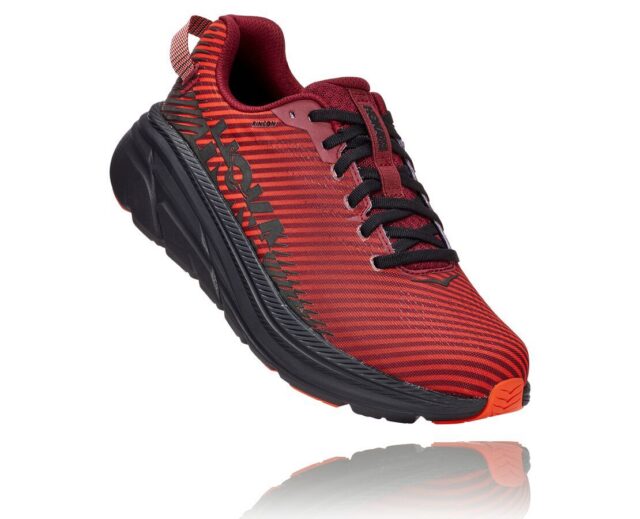
Intro
Last winter, I probably did well over half of my running in the original version of the Hoka One One Rincon — and I pretty much loved it. The Rincon was simple, well designed, and extremely light for how much cushion it offered. It felt pretty smooth and comfortable, but still surprisingly fast and efficient for a shoe of its size.
The only issue I really had with the original Rincon was that the upper wasn’t particularly forgiving, especially on my first few runs on the shoe — I actually got some pretty sizeable blisters on the arches of both feet after my first longer run in the Rincon, which is pretty unusual for me. So needless to say, when I saw that Hoka had released the Rincon 2, I was pretty stoked — especially because they left the general design of the shoe unchanged, with the main change being a new, “more refined” upper.
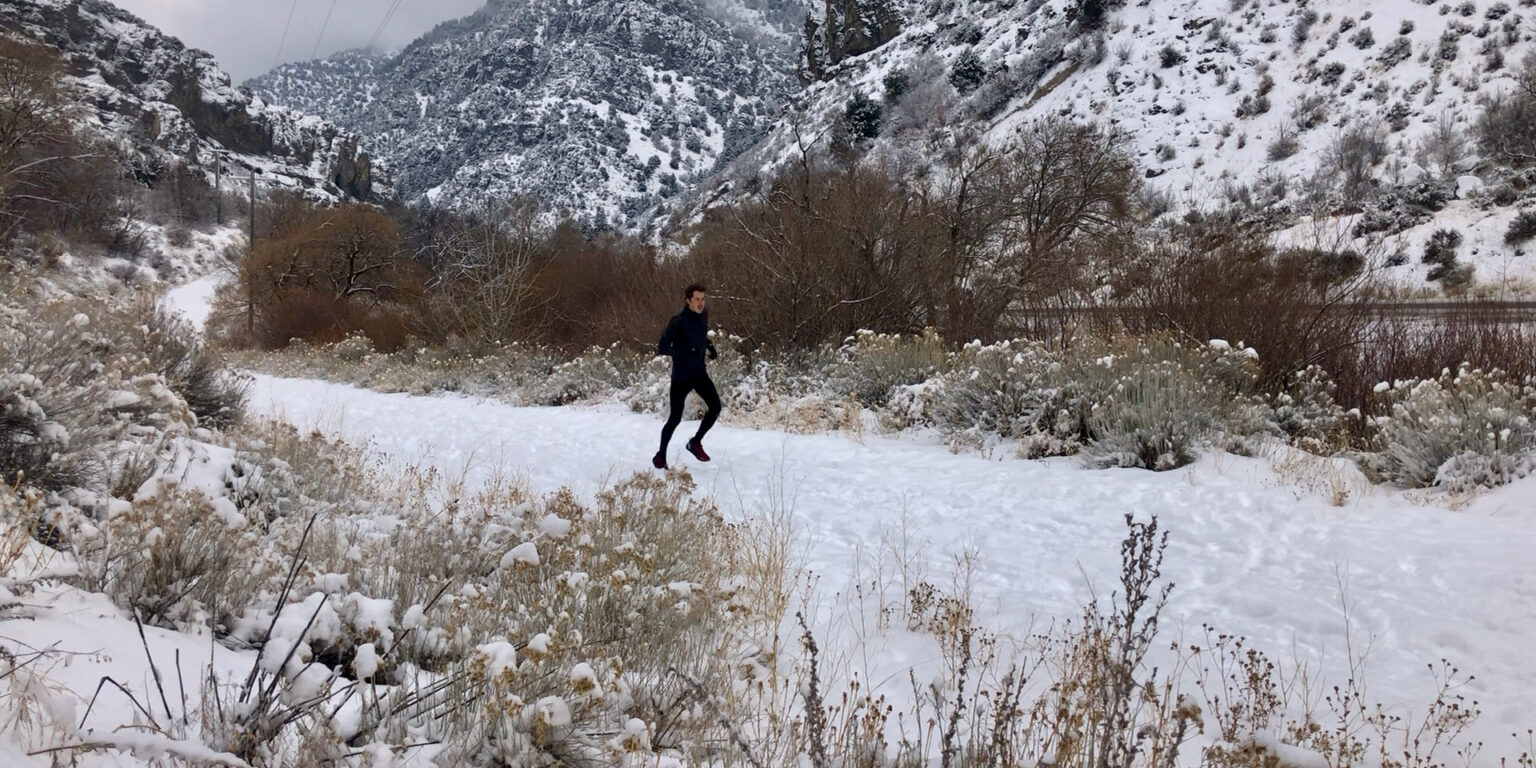
So does the Rincon 2’s new upper address the blistering issues I had with the original version of the shoe? And how does the Rincon 2 compare to other “performance-oriented” road shoes like the Topo Athletic Zephyr? I’ve run about 80 miles in the Rincon 2 so far, and I’m pleased to report that I think it’s even better than the first version. In this review, I’ll break down why.
Hoka One One Rincon 2 vs. Rincon
As I mentioned in the intro, the Rincon 2 has a lot in common with the original version of the shoe. It’s got the same 32 mm / 27 mm stack height, compressed EVA midsole, and minimal rubber outsole pods — which I think is great. The Rincon 2 also has the same impressively light stated weight as the previous version of the shoe (218 g / 7.7 oz). Unlike many shoe companies, Hoka seems to have a pretty good understanding of the whole “if it ain’t broke don’t fix it” thing — at least in the case of the Rincon.
The only major change to the Rincon 2 is its upper. Rather than the extremely thin, single-layer mesh used on the original version, the Rincon 2 has a slightly thicker (but still super light / breathable) “engineered” mesh upper. According to Hoka, this new material is more breathable in the forefoot and more secure through the midfoot. It’s also allegedly more durable than the previous version’s upper. Aside from that, the Rincon 2 looks and feels a whole lot like version one.
Fit
As always, it’s a good idea to try on the Rincon 2 in person if you’re able. If not, read on for a general overview of how the Rincon 2 fits my feet. For reference, I have pretty narrow, low-volume feet and prefer shoes with a secure midfoot and spacious toebox.
Unsurprisingly, the Rincon 2 fits pretty similarly to the first version of the shoe. The midfoot and heel cup are extremely comfortable, but still feel secure — even for my narrow / low-volume feet. I’m not sure that the midfoot feels any more secure in the Rincon 2 than it did in the original version — but I also didn’t think that the first version felt even remotely sloppy on my feet.
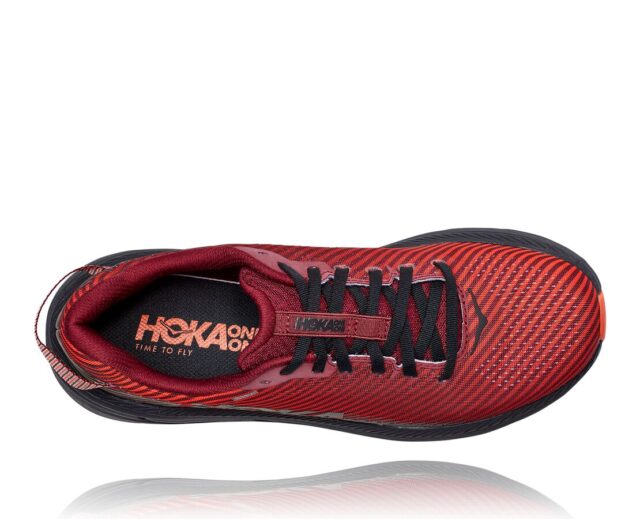
The Rincon 2’s toebox is still a little on the narrower side — especially when compared to shoes like the Altra Torin or Topo Zephyr. But as with the first version of the Rincon, the upper material has enough stretch to it that my toes don’t feel overly confined. If anything, the Rincon 2 feels slightly wider / higher-volume than the first version. Still, if you have particularly wide / high-volume feet, I’d expect the Rincon 2 might feel a little tight.
Weight
For a shoe with a 32 mm / 27 mm stack height, the Rincon 2 is really light. I don’t claim to be an expert on every road shoe ever made, but I think you’d be pretty hard-pressed to find many shoes that offer a better cushion-to-weight ratio to the Rincon 2. For example, here’s how the Rincon 2’s stated weight compares to a few similarly cushioned shoes from other brands (all stated weights are based on a US Men’s Size 9):
213 g / 7.5 oz — Hoka One One Rocket X
213 g/ 7.5 oz — Brooks Hyperion Elite
218 g / 7.7 oz — Hoka One One Rincon 2
221 g / 7.8 oz — Saucony Endorphin Speed
238 g / 8.4 oz — Sketchers GOrun MaxRoad 4 Hyper
252 g / 8.9 oz — Hoka One One Clifton Edge
255 g / 9.0 oz — Altra Duo 1.5
266 g / 9.4 oz — Topo Athletic Zephyr
Before you read too much into those weights, it’s worth pointing out that the Hoka Rocket X and Brooks Hyperion Elite are both carbon-plated racing shoes — so it’s really not that surprising that they’re a little lighter than the Rincon 2 (They also cost $180 and $250, respectively, compared to the Rincon 2’s $115. Just saying). I mostly just included the Rocket X and Hyperion Elite to point out that the only shoes (that I can think of) that really come close to the Rincon 2’s combination of cushion and weight are super fancy, tech-heavy, racing-oriented shoes.
So for a lightweight “everyday” shoe, the Rincon 2 is pretty much in a class of its own as far as weight goes. And unsurprisingly, it feels very light on the road. The Rincon is one of only a few shoes in my current rotation that’s light enough to truly “disappear” on my feet after the first few minutes of a run — even though it also has the highest stack height of any shoe in my larder.
Upper
The Rincon 2’s new upper uses a slightly thicker mesh than the previous version of the shoe — but it still feels pretty airy and minimal overall. The Rincon 2 also has some extra synthetic overlays that wrap around the midfoot and heel, which I assume are what Hoka is talking about when they say that the new upper is more secure through the midfoot. As I said in the “Fit” section, I can’t feel a noticeable difference between the Rincon and the Rincon 2 — but I think that both shoes fit very comfortably and securely through the midfoot.
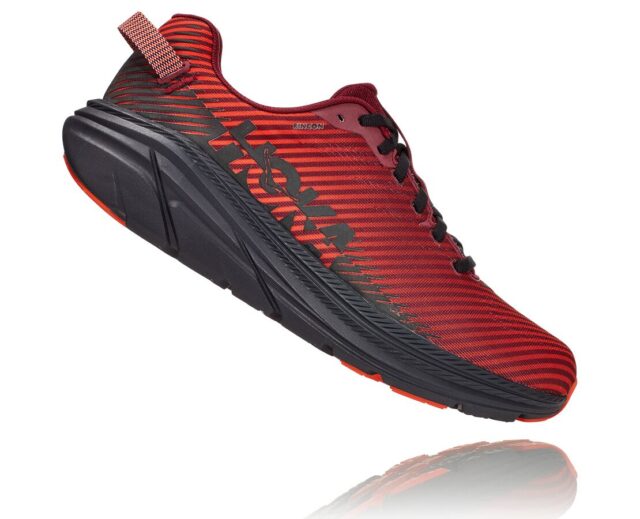
Midsole
The Rincon 2 has the same compressed EVA midsole and “early stage Meta-Rocker” geometry (i.e., turned up sole profile near the toe and heel) as the first version of the shoe. As I said in my review of the original Rincon, the EVA material Hoka uses for the midsole provides ample cushioning (for my preferences anyway) without feeling like a marshmallow. The Rincon 2 feels fast and energetic at faster paces, but it also feels a bit more cushioned and comfortable than a stiffer shoe like the Topo Zephyr during longer, slower runs.

On the whole, I’m just as happy with the Rincon 2’s cushioning as I was with the previous version’s. It provides enough impact absorption to keep my feet and lower legs from getting totally beat up on long road runs, but it’s firm enough to still feel fast and efficient.
Outsole
The Rincon 2 has a fairly standard outsole for a road shoe — most of the outsole is just exposed midsole foam, with rubber pods covering high-wear areas in the forefoot and heel. This outsole design provides plenty of grip on all kinds of wet and dry pavement / concrete and feels reasonably secure on gravel roads / paths as well. As you’d expect, the exposed midsole foam starts to look fairly worn down pretty quickly, but it also doesn’t keep wearing down to the point where it impacts the shoe’s ride or traction, in my experience. Much like the rest of the shoe, the Rincon 2’s outsole design isn’t really anything fancy, but it does its job well and helps keep weight to a minimum, so that’s a win in my book.
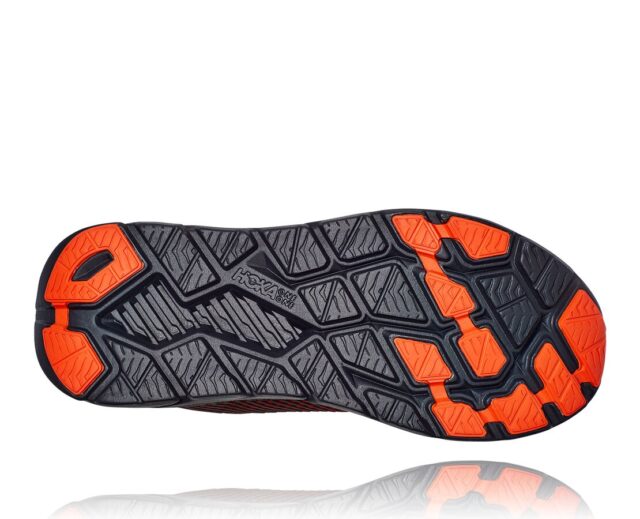
On The Road
Like the previous version of the shoe, the Rincon 2 has become my go-to shoe for everyday training runs on the road. I’m continually impressed by how simultaneously light and cushioned the Rincon 2 feels, whether I’m on a slower-paced, 3-hour run or doing high-intensity intervals. The fairly firm midsole foam and rockered midsole geometry give the Rincon 2 a smooth, efficient feel.
With that said, I do think that more specialized, speed-focused shoes feel a bit faster than the Rincon 2 during interval workouts — even if they’re slightly heavier. For example, the Topo Athletic Zephyr, which has a rigid elastomer plate in the midsole that’s designed to improve energy return, does feel a bit faster / more energetic than the Rincon 2. I haven’t personally run in any carbon-plated shoes like the Hoka One One Rocket X, but I’d imagine that they probably feel even faster.
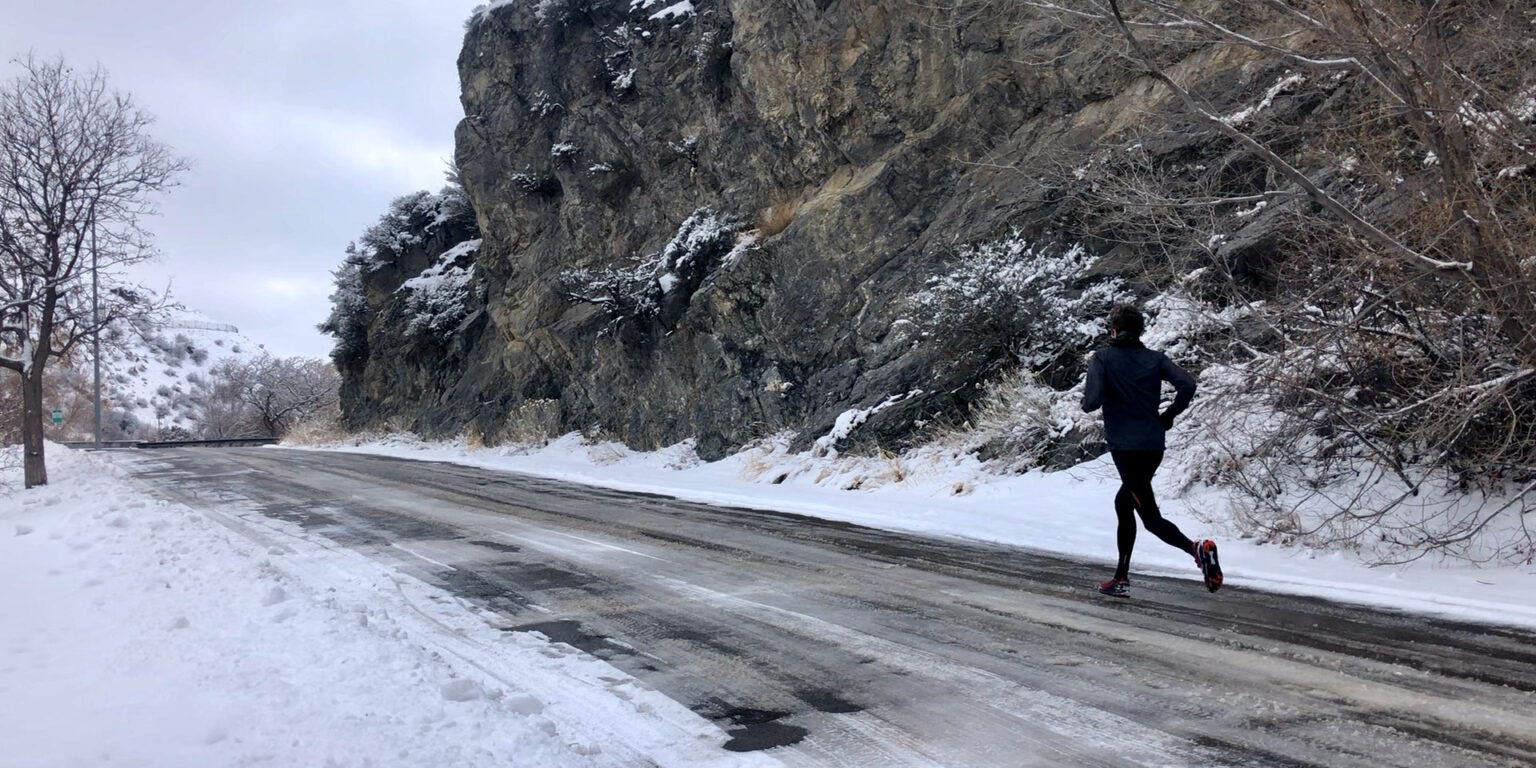
Even so, I think the Rincon 2 is a significantly better “all-round” shoe than the Zephyr. The Rincon might not feel quite as fast during speed workouts, but it doesn’t feel overly slow and cumbersome, either. More significantly, the Rincon 2 is way more comfortable on longer runs than the Zephyr. The Zephyr’s aggressive forefoot rocker and extremely stiff / rigid midsole make it extra speedy, but they also make it extra hard on my feet and lower legs during longer runs. So overall, if I had to pick one shoe for all of my road runs, the Rincon 2 would definitely be it.
Durability
I put about 360 miles on the original Rincon before retiring it, and probably could’ve kept running in it if I’d needed to — the upper was still in great shape, but the midsole had started to feel a bit packed out / flat. Regardless, I think 360 miles is pretty solid for an extremely lightweight (and relatively inexpensive) shoe. So far, the Rincon 2 seems to be equally durable. The exposed midsole foam on the outsole has definitely worn down a fair amount after 83 miles of use, but as I’ve said previously, it doesn’t affect the shoe’s performance in any way. The upper doesn’t show any signs of wear so far, and the midsole feels the same as it did out of the box.

I’ll report back later on the Rincon 2’s long-term durability once I’ve put more miles on the shoe, but I like what I’m seeing so far — I fully expect the Rincon 2 to make it to 350-400 miles, which is pretty awesome for a 218 g / 7.7 oz shoe.
Who’s It For?
I think the Rincon 2 is a solid choice if you’re looking for an extremely lightweight everyday road shoe that can handle everything from speed workouts to long runs. If you prefer a highly cushioned, plush shoe and don’t mind a little extra weight, something like the Hoka Clifton 7 or Clifton Edge might be a better option. Conversely, if you’re just looking for a super-fast race-day shoe, carbon-plated shoes like the Hoka One One Rocket X will almost certainly feel faster. But if you like a lightweight, well-cushioned shoe for day-to-day use, I think the Rincon 2 is pretty hard to beat.

Bottom Line
In my opinion, the Hoka One One Rincon 2 is a perfect example of a shoe update that actually makes sense. Hoka did an excellent job of identifying potential issues with the first version of the shoe (namely, the upper) and addressing them in version 2. At the same time, they didn’t mess up all of the things that made the original Rincon such a great shoe. In my eyes, the Rincon 2 is everything that a high-cushion shoe should be — comfortable, efficient, and extremely light. Oh, and it’s also the most affordable shoe in Hoka’s road line-up. Taken together, I think that all those factors make the Rincon 2 a pretty awesome shoe.


Thanks for the review and looking forward to the Rincon 2. I had stocked up on the Rincon, but racking up miles on them, so about to purchase. This is really the sweet spot shoe in Hoka road lineup and love them.
I also have narrow, LV feet and happy that the width has not increased. The Rincon are about as wide as I can take